The Muñeca Sin Rostro (Faceless Dolls) is a placemaking sculptural project and creative educational arts initiative launched by the Punto Urban Art Museum (PUAM), a social justice arts program of North Shore Community Development Coalition (NSCDC).
One of PUAM’s active goals is to positively improve the lives of North Shore residents through public art, particularly those living in Salem’s Point neighborhood, an area defined by its high density of apartment buildings and limited access to green or outdoor space. To foster a sense of belonging, increase community interaction, and promote walkability, PUAM has prioritized the activation of all open-air spaces within and surrounding the neighborhood, including parks, alleys, courtyards, and underutilized corners. These spaces, though often overlooked, have the potential to become sites of connection, culture, and healing.
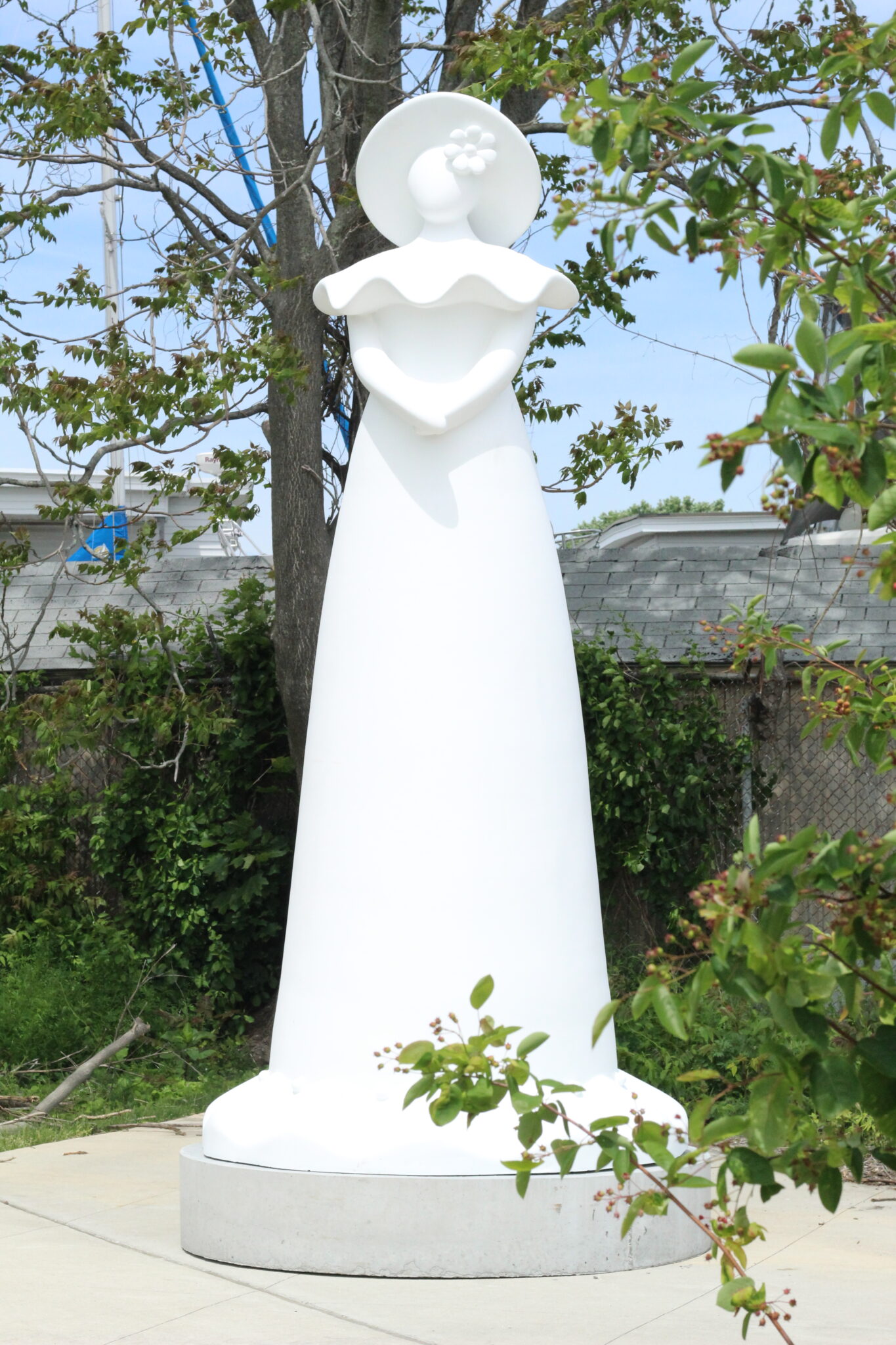
For the specific sites of Palmer Cove Park and Pioneer Terrace, a senior housing community, PUAM explored what kind of public artwork could feel both iconic and culturally resonant for the largely LatinX population surrounding the area while also being welcoming and relevant to people of all backgrounds. This search led us to sculptor Luis Rivas and his Urbe Iconica project, a traveling sculptural exhibit known for becoming a magnet for community gatherings and storytelling wherever it is installed.
The ceramic Muñeca Sin Rostro was originally created by Liliana Mera Lime, a pottery worker in the town of Moca, a northern province in the Dominican Republic, in 1981. Liliana, wanted to depict a small figure of a woman. Due to the lack of tools and molds, the doll was handcrafted by hand on the potter’s wheel, and elements like ruffles, baskets, and hats were added onto the doll’s body after it was shaped. The lack of tools at the time gave the doll its most important feature: a blank face.
Once the small, colorful figurine was hand-painted, it immediately became a precious item to the pottery shop and its customers who couldn’t get enough of the dolls’ beauty and simplicity. Over the years, the look of the doll has evolved; you can find them carrying a vessel on their heads, including fruit, water, or wood. Over the years, the doll has become a canvas for representation and storytelling.
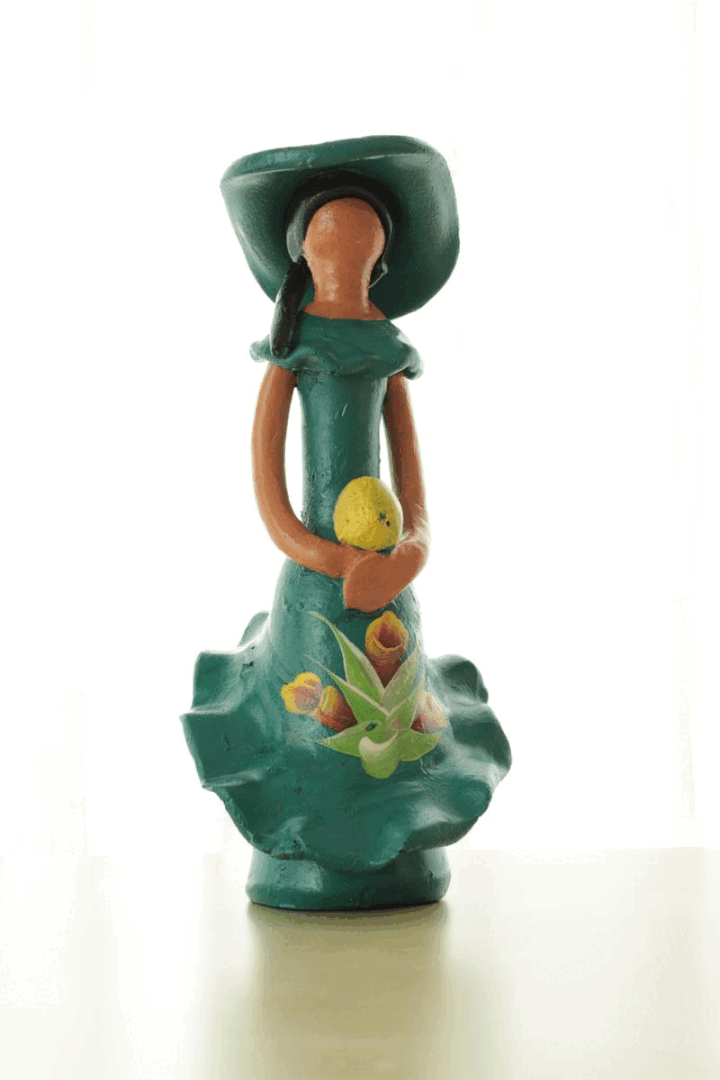
To deepen engagement in the Muñeca Sin Rostro project, our project manager, Yinette Guzman, developed a simple, printable paper doll template that mirrors the original ceramic design. Created to be easily assembled with just a few household tools, the template became the foundation of a creative workshop campaign offered both as a self-led activity, through instructional videos, and as part of guided, in-person sessions.
Over the past six years, PUAM has led a series of community workshops, events, and exhibitions that combine creativity with personal storytelling. These workshops invite participants to celebrate and preserve their heritage by designing their own paper dolls. Each session includes three components: storytelling, designing, and building. Participants reflect on their cultural identities using sensory and memory-based prompts, translate these reflections into visual elements, and then construct their three-dimensional paper dolls, complete with the iconic faceless head.
In Spring 2021, in collaboration with Salem Maritime National Historic Site, PUAM co-created a Muñeca Sin Rostro exhibit that featured the stories of community members and hosted a panel discussion, where three participants shared the meaning behind their creations. This exhibit was on view at the Salem Armory Visitor Center from May 7 to June 30, 2022, with additional exhibitions throughout Salem.
This community engagement strategy has been a powerful tool for education, connection, and participation, welcoming involvement from school-aged children to seniors. This project continues to grow as a creative and mindful way to honor the diverse narratives that make up our community.
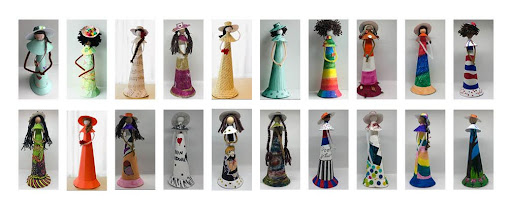
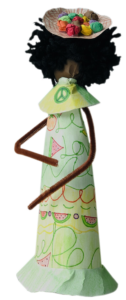
“Don’t touch my hair” by Tatianna Rivas.
They said let me touch your hair well this not a zoo. I am not a animal. they treat us like a dog, I am not one. Don’t pet my hair and touch it like I am one. This is not a wash and go. Wash, condition, Detangle, part twist twist twist. It does not take me a minute to do my hair. Five minutes 10 minutes 15 minutes past i’m still going twist twist twist another five minutes twist twist twist 20 minutes past now it’s time for bed grab my silk bonnet put it on now it’s Time to rest. In the morning I wake Take off my bonnet untwist untwist untwist. I grab my beautiful pic pic it out a little bit then I’m set total time to do my hair half an hour a hour max so when you ask to touch my hair my answer is no respectfully.
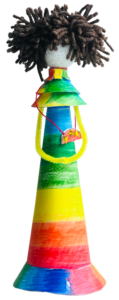
“My Dominican Faceless Doll represents many stories. The feeling of being different and misunderstood. LGBTQ+ folks who migrate to America looking for hope, understanding, and support. How powerful it is to reclaim our identity…”
– Shantel Alix Fernandez, El Punto resident and North Shore CDC Community Engagement Coordinator
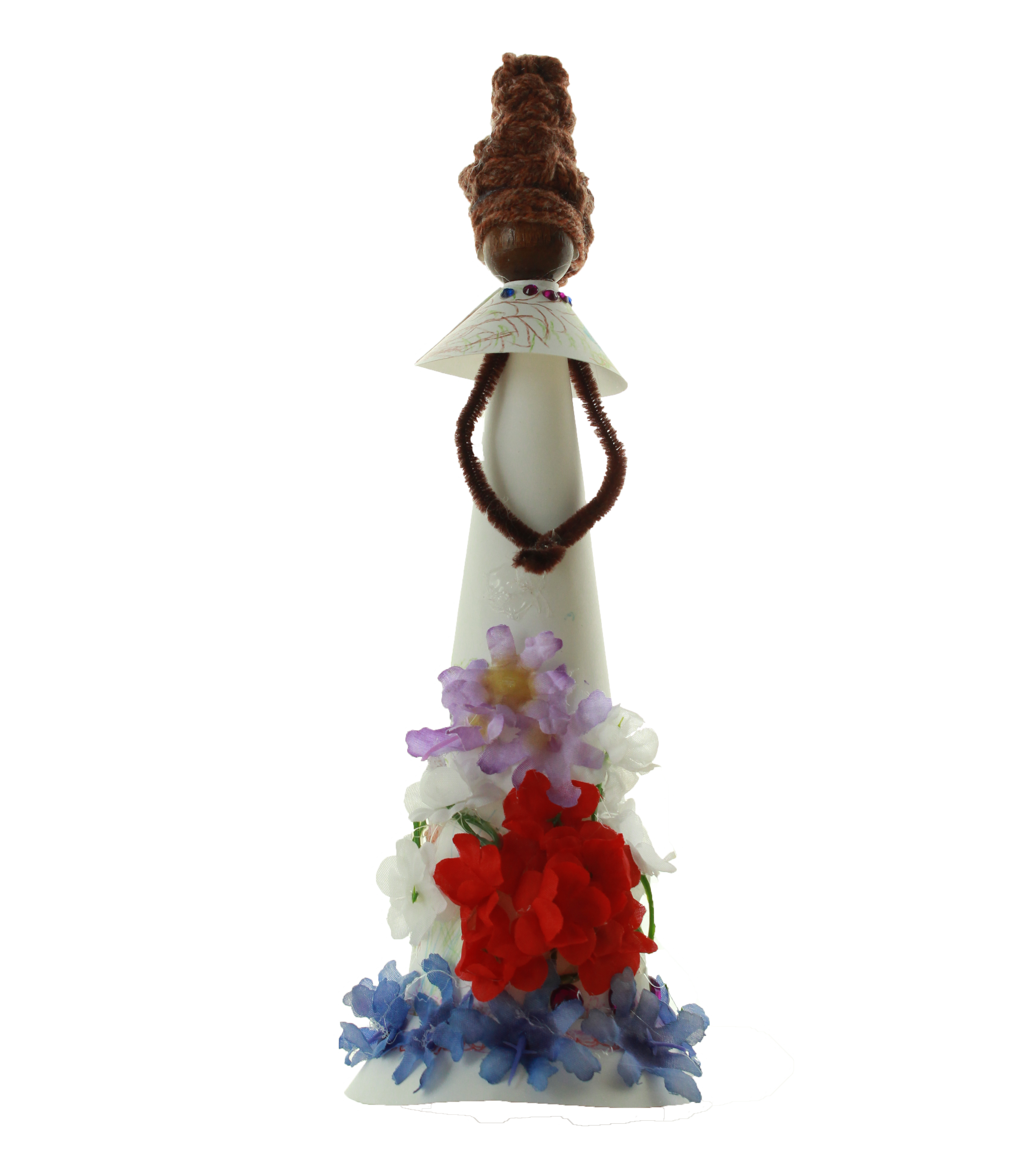
“…Quise que se viera como mucho de nosotros, Sentí que era importante hacerla así porque representa mi raíces, venimos de una cultura afroamericana, y me gusta identificarme con mi cultura. Su pelo está en trenzas y lo cual es nuestro estilo, un estilo afro latino. Incluye flores porque las flores significan felicidad y libertad…”
“I wanted it to look like a lot of us, I felt it was important to do so because it represents my roots, we come from an African American culture, and I like to identify with my culture. Her hair is in braids and which is our latin/afro american style. It includes flowers because flowers mean happiness and freedom.”
– Altagracia Florian, Erika’s Beauty Salon owner
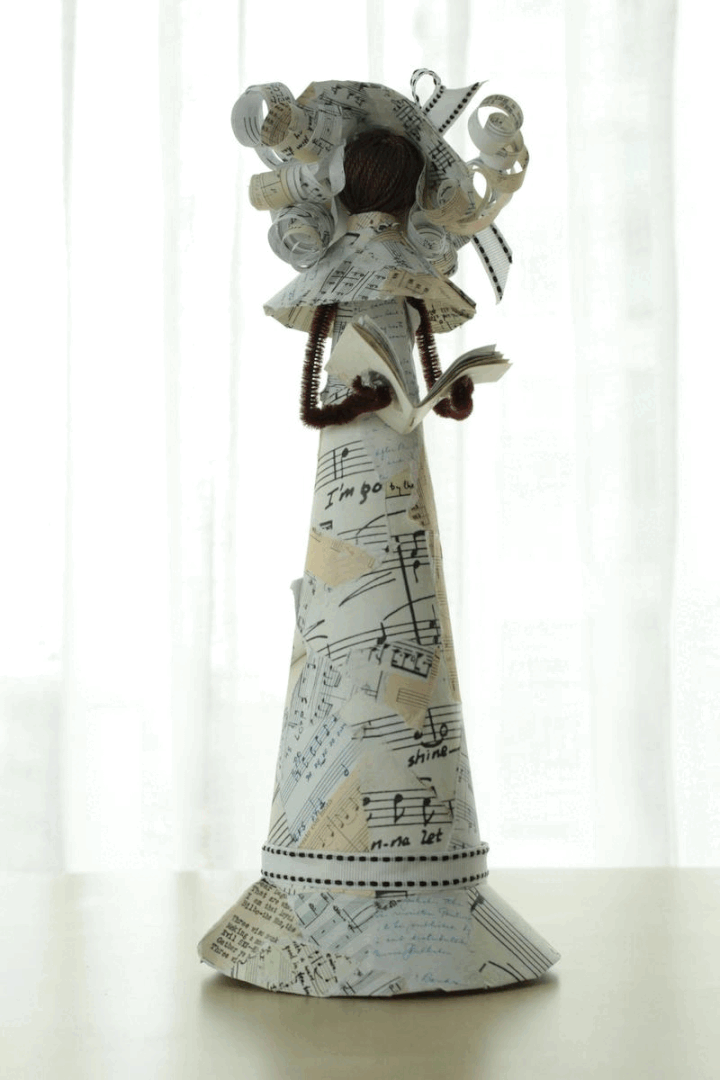
“I don’t have a name for my doll. But it represents all the female composers whose names we’ll never know, but whose works have shaped all music, whether we know them now or not. All of the music paper I used is from works by women.”
– Nikki Schafer, Salem Resident and North Shore CDC Economic Development Coordinator.
Did you know you can create your own paper Muñeca Sin Rostro at home? Simply download the PDF and follow along with a step-by-step YouTube video. You can even host a workshop with students, family, or friends!
Click this link to download the template to create your own doll!
Yinette Guzman
Design and Placemaking Manager
North Shore CDC
yinette@northshorecdc.org
978-745-8071
In neighborhoods like el Punto, where stories are often untold or overlooked, the Muñeca Sin Rostro project serves as a powerful form of cultural placekeeping, elevating everyday narratives into visible, shared landmarks of identity and pride.
Salem Housing Authority, City of Salem, Essex Heritage, The Barr Foundation, MassDevelopment, and National Park Service
Salem Maritime National Historic Site, Salem Prep High School, American Association for State and Local History(AASLH), & Saltonstall Elementary School
Regina Zaragoza Frey, John Andrews, Cathy Hoog, Donecca Thurston, Shantel Alix, Jane Long, City Councilor-at-large Alice Merki, Julie Barry, and Fernando Pacheco Zayas
Altagracia Florian, Vicky Ortega, Iverson, Oswald, Adriana Rosales, and Belinda Maradiaga
Senior Design and Placemaking Manager, Yinette Guzman, and various NSCDC team members: David Valecillos, Mickey Northcutt, Shantel Alix, Milagros Pichardo, Saniego Sanchez, and Yuko Okabe.
Ashley Ganem, David Valecillos, Felicia Pierce, J Ceilia, Julia Bethmann, Machel Piper, Yuko Okabe, Norah Hollaran, Donecca Thomson, Karen DeTemple, Lyssa Paluay, Emily Roduck, Steve Iverman.
Fabrication: Icon Poly. Installation: BRM production. Designer: Luis Rivas, Selected Artists: Ramon Santiago, Yixuan Zeng, Vicky Ortega, Melanio Guzman & Rigo Peralta, Angela Gonzales, Sheila Billing, and Luis Rivas. Landscape Architects: Crowley Cotrrell’s Mark Warfel Jr. and Naomi Cottrell. Structural Engineer team: Simpson Gummpertz & Heger
PUAM is a project of North Shore CDC
96 Lafayette St. Salem MA 01970
get directions »
email Info@northshorecdc.org
978-745-8071